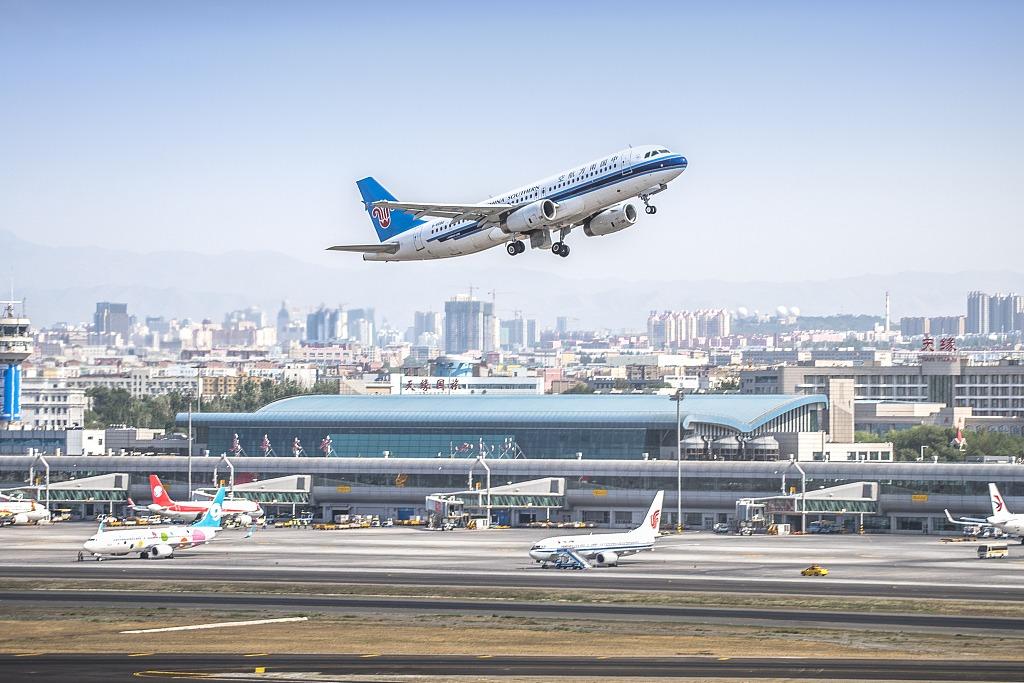 An Airbus A320 plane from China Southern Airlines takes off from Urumqi International Airport on Nov 20, 2020. (PHOTO / VCG)
An Airbus A320 plane from China Southern Airlines takes off from Urumqi International Airport on Nov 20, 2020. (PHOTO / VCG)
A new aircraft metal testing laboratory in Urumqi, Xinjiang Uygur autonomous region in Northwest China, has become the country's first such facility to use independently developed Chinese equipment, promising to make aircraft health checks in the region more convenient.
The lab, located in the Xinjiang base of State-owned China Southern Airlines, began operations recently, and is expected to cater to growing travel demand.
Equipped with domestically produced electron microscopes, the facility is considered a landmark achievement as Chinese-made high-precision testing instruments are used for the first time in China's civil aviation industry's aircraft metal testing process.
READ MORE: China civil aviation sector's passenger trips soar in 2023
Before this lab was established, the metals used in the fuselage of local aircraft had to be tested at facilities in cities such as Beijing and Guangzhou, Guangdong province, thousands of kilometers away.
The entire process took several days, and planes in Xinjiang had to be parked on the tarmac until the results were released. Now, detailed inspection reports from the Urumqi lab can materialize within three hours to show whether or not the aircraft meet the requirements of airworthiness.
The Spring Festival travel rush that began on Jan 26 and will last until March 5 is expected to benefit from the new lab's opening as the facility will help improve the reliability and utilization rate of civil aircraft in Xinjiang, and provide more capacities to transport passengers, China Southern Airlines said.
The number of air passenger trips to be handled during the Spring Festival holiday is expected to exceed 80 million, a potential record and possibly marking almost a 10 percent surge from the comparable pre-pandemic level in 2019, and up a staggering 45 percent over the 2023 festival period level, according to projections of the Civil Aviation Administration of China.
"Next, the Xinjiang base of China Southern will continuously strengthen its technological innovation capabilities, improve safety management level and grab the business opportunities emerging from the China (Xinjiang) Pilot Free Trade Zone," said Zhang Yunbing, manager of the Xinjiang base of China Southern's engineering and technology branch.
"We will continue to promote the high-quality development of the civil aviation sector in Xinjiang with highly advanced technologies," Zhang said.
China Southern said it has utilized multiple advanced technologies to help monitor aircraft.
ALSO READ: Four Chinese airlines to buy almost 300 Airbus jets
For instance, with artificial intelligence equipment, maintenance employees regularly conduct inspections. They use endoscopes to detect any issues with the fan blades and other internal structures.
"The central and western areas of China boast the largest number of high-altitude airports, and present rich opportunities to develop regional aviation," said Li Guijin, a professor at the Civil Aviation Management Institute of China in Beijing.
"Domestic carriers should connect more smaller cities to their hub airports to build a competitive route network. The sustainable growth of regional aviation is at the core of the Chinese airline industry's competitiveness."
Contact the writers at zhuwenqian@chinadaily.com.cn


